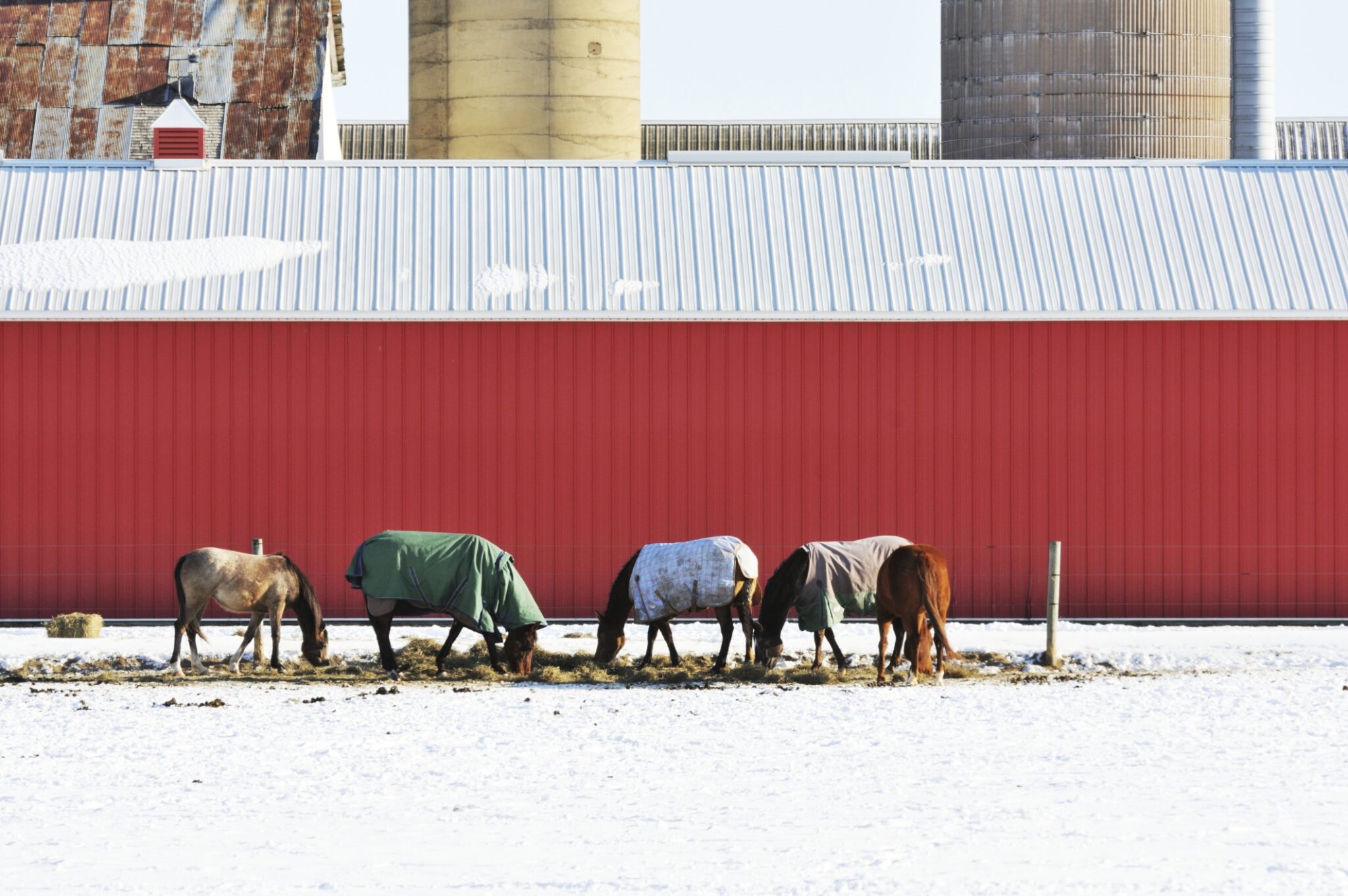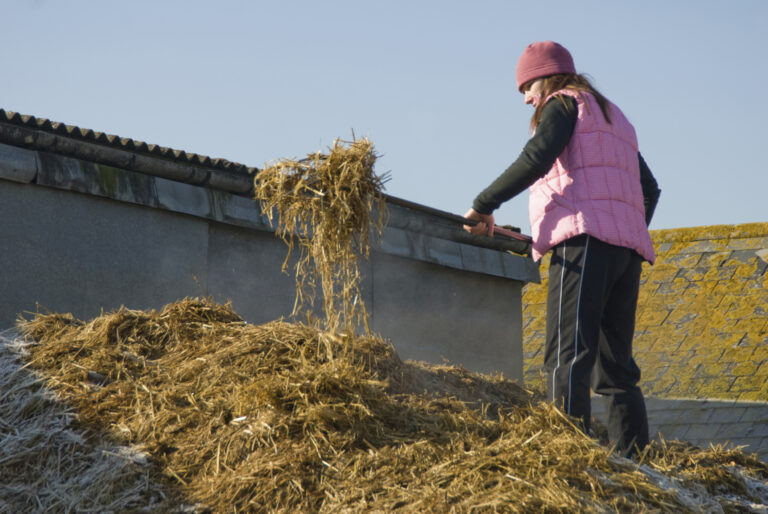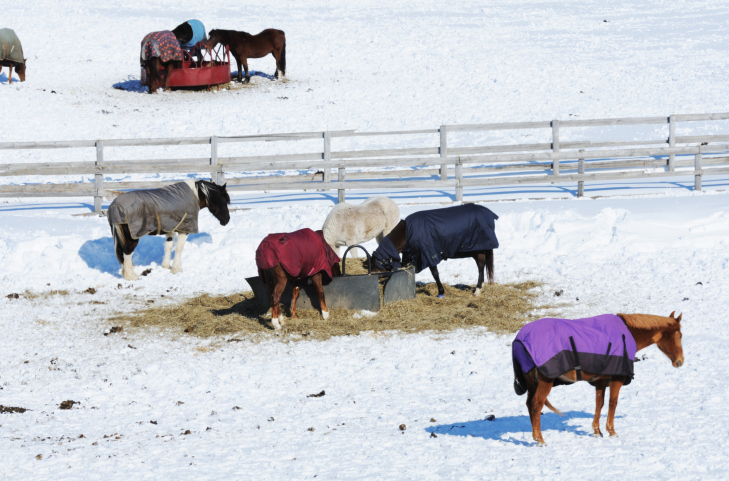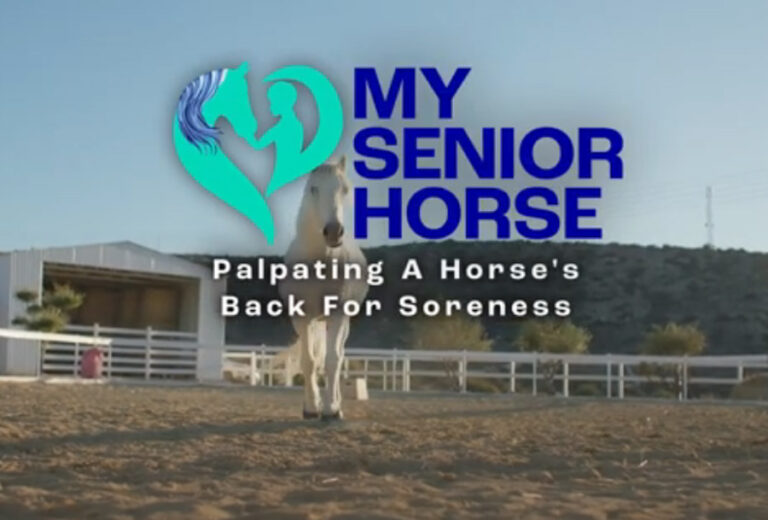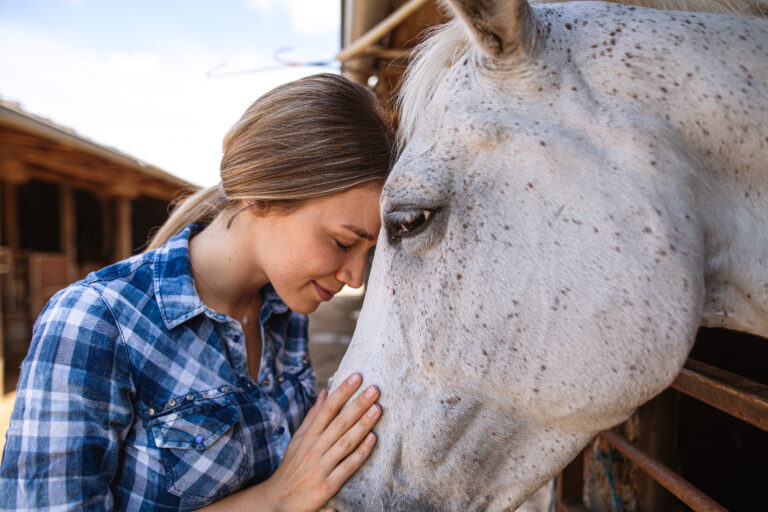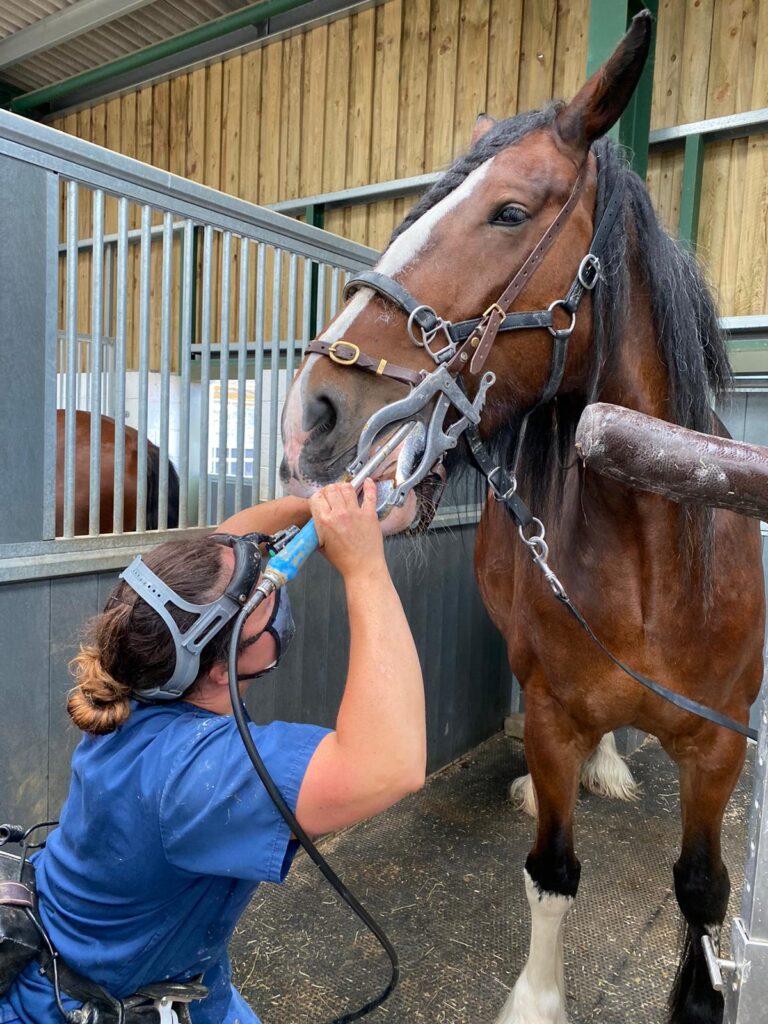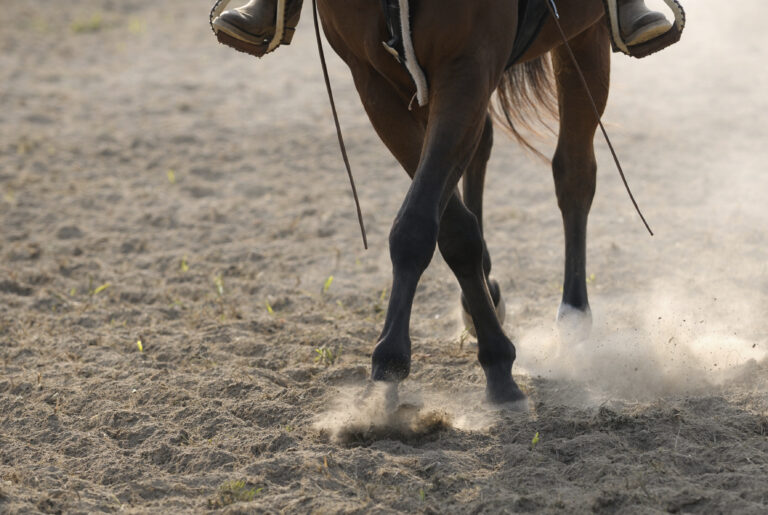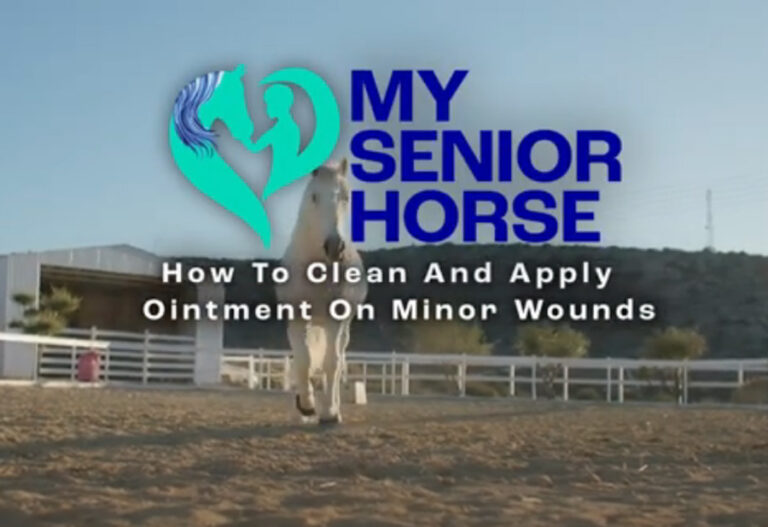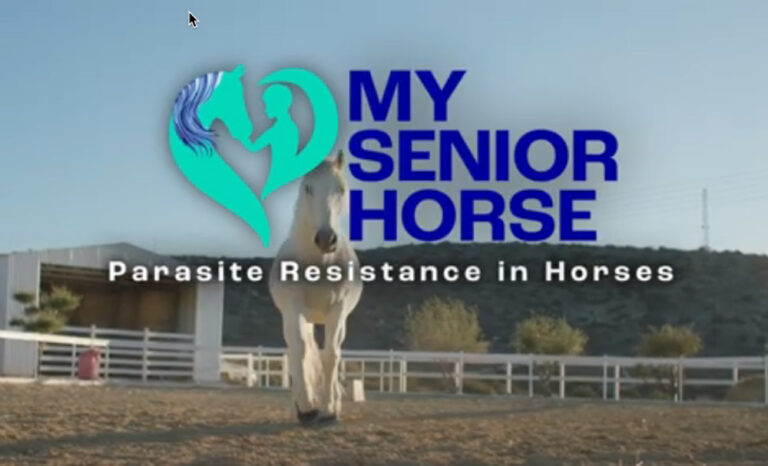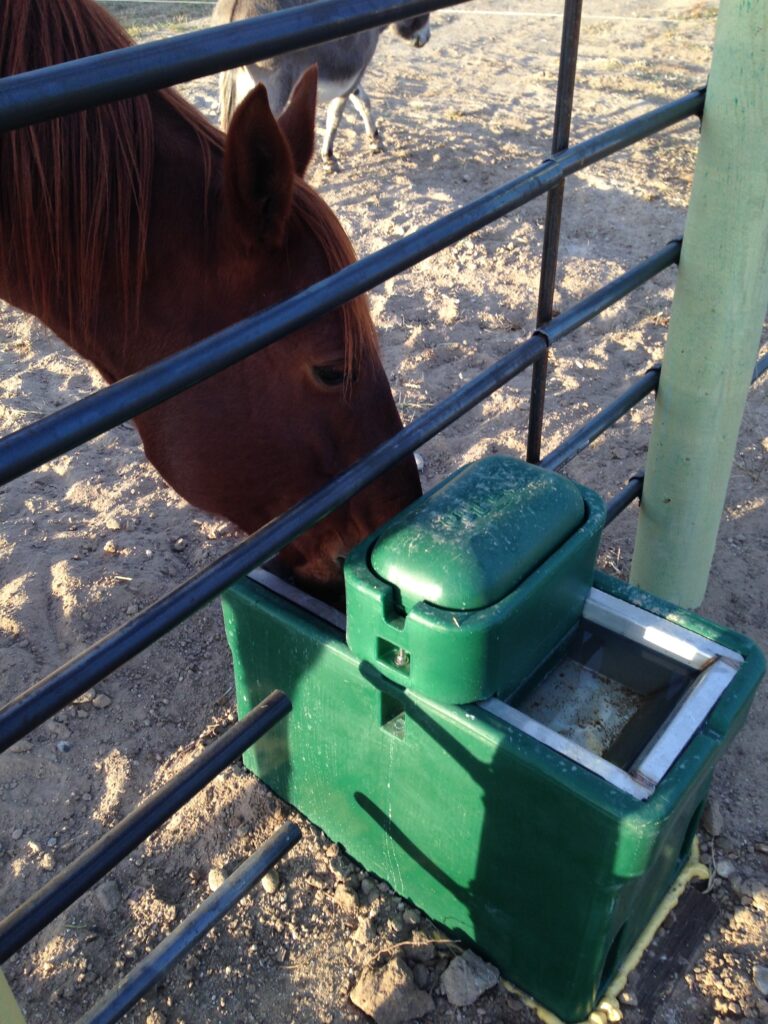Senior horses might need some special care as winter approaches. Older horses require a little extra care during colder months to maintain weight, stay warm, and avoid potential health risks associated with aging and cold weather.
This article provides tips for senior horses in cold weather, focusing on feeding, body condition, shelter, and exercise.
Proper Feed and Forage for Senior Horses in Cold Weather
Senior horses often struggle to maintain weight during colder months due to increased energy demands. It’s crucial to provide them with proper feed and nutrition.
To address senior horses’ increased caloric needs in cold weather, owners should focus on enhancing the animals’ forage-based diets with energy-dense feeds.
Elderly equines might benefit from feeds specifically formulated for seniors. These are easier to chew and digest and generally are higher in calories. Adding fats to the diet, such as stabilized rice bran or vegetable oils, can also increase calorie content without the need for large volumes of grain. This reduces the risk of digestive upset.
For senior horses, especially during the cold months, high-quality forage plays a vital role in maintaining health and well-being. Ideal forages for older equines include soft, leafy hay—such as second or third cutting alfalfa—and mixed grass hays that are easier for senior horses to chew and digest. These forages are palatable and rich in nutrients crucial for the senior horse’s diet.
However, for senior horses facing dental issues, traditional hay might not be the best option. In such cases, forage alternatives become essential to ensure these older horses still receive the fiber and nutrients they need without causing discomfort or further dental harm.
Processed forage products, such as hay cubes or pellets, are excellent alternatives. When softened with water, they can significantly ease the mastication (chewing) process. This makes it easier for horses with compromised dental health to consume their forages.
Beet pulp, a highly digestible fiber source, can serve as another forage substitute when soaked in water, offering both nutritional support and promoting hydration.
It’s critical to monitor the horse’s health closely and adjust its diet as necessary throughout the colder season.
Monitor Body Condition
It’s important to monitor your horse’s body condition regularly and adjust care accordingly, especially in cold weather. This might include increasing its feed, providing blankets or additional blankets, or moving it to a warmer shelter.
Using a body condition score and taking monthly photos can help. But when a senior horse has a winter haircoat, nothing beats a hands-on inspection. You should be able to feel fat cover over the ribs. If the ribs are visible or protruding, the senior horse needs more calories. Have that horse looked at by a veterinarian, as it might have an underlying illness or condition.
Providing Adequate Shelter to Senior Horses in Cold Weather
Cold temperatures can aggravate arthritis issues in senior horses. There are different degrees of shelter you can provide your senior horse. Each type of shelter offers its own set of benefits based on the weather conditions, the horse’s health, and available space. Here are some basic types of shelter:
- Insulated Stables: For regions experiencing extreme cold, insulated stables can provide a warm and controlled environment for senior horses. These stables retain heat effectively, especially when equipped with heaters, ensuring a comfortable temperature throughout the winter. You must ensure good ventilation in insulated barns. If you use heaters, make sure you are aware of the risk of barn fires and keep horses and flammable materials away from heat sources.
- Run-In Sheds: For horses that prefer to spend most of their time outdoors, run-in sheds are excellent options. They allow horses the freedom to choose when to seek shelter. Positioning these sheds to block prevailing winds and insulating them can offer additional protection against cold weather.
- Windbreaks and Natural Shelters: In less severe climates, or for horses that are more adaptive to colder conditions, natural landscapes or human-made windbreaks can provide sufficient shelter. Trees, hedgerows, or erected barriers can break the force of winter winds, offering a more natural and less-confined option.
- Blanketing: In some cases, a fully enclosed shelter might not be available or preferred. Creating a sheltered area where horses are equipped with appropriate winter blankets can help them maintain body heat. This method requires more attentive management to ensure blankets remain dry and in position.
When choosing the right type of shelter for your senior horse, consider its individual needs, health conditions, and the specific weather challenges of your location. It’s also important to check the shelter’s condition regularly to make sure it remains safe, secure, and effective throughout winter.
Encourage Regular Exercise
While it’s crucial to keep senior horses warm, it’s equally important to ensure they get regular exercise. Movement is good for equine arthritis, which can be more prevalent in older horses. Regular exercise can help keep your horse’s joints flexible and improve their overall health.
Final Words
Taking care of senior horses in cold weather requires careful consideration of their unique needs. By paying close attention to their nutrition, body condition, shelter, and exercise, you can help ensure your older equines stay comfortable and healthy throughout the winter months.
Further Reading
- Four Tips to Prepare Your Senior Horse for Winter. MySeniorHorse.com
- Winter Care for Senior Horses. MySeniorHorse.com
-
Editors of My Senior Horse are journalism professionals, most of whom are lifelong horse owners.View all posts

